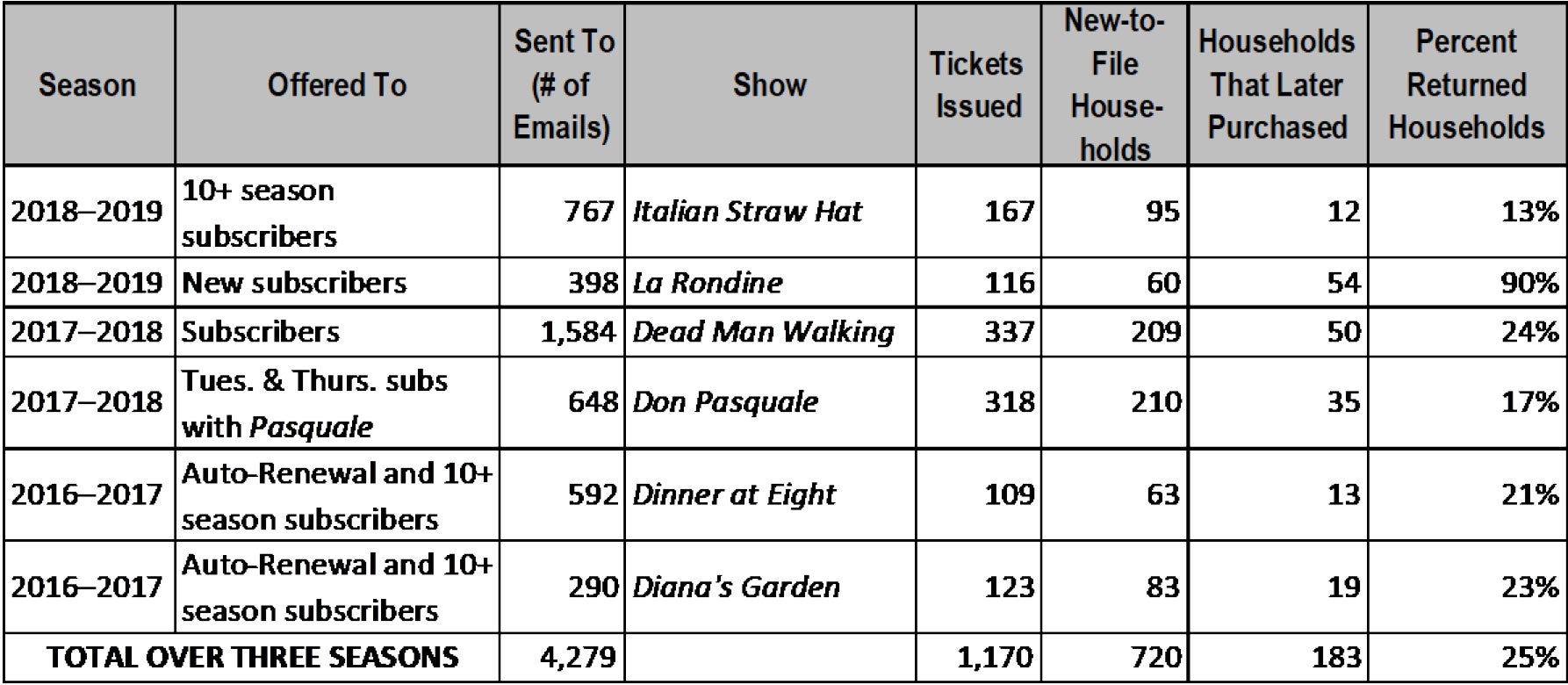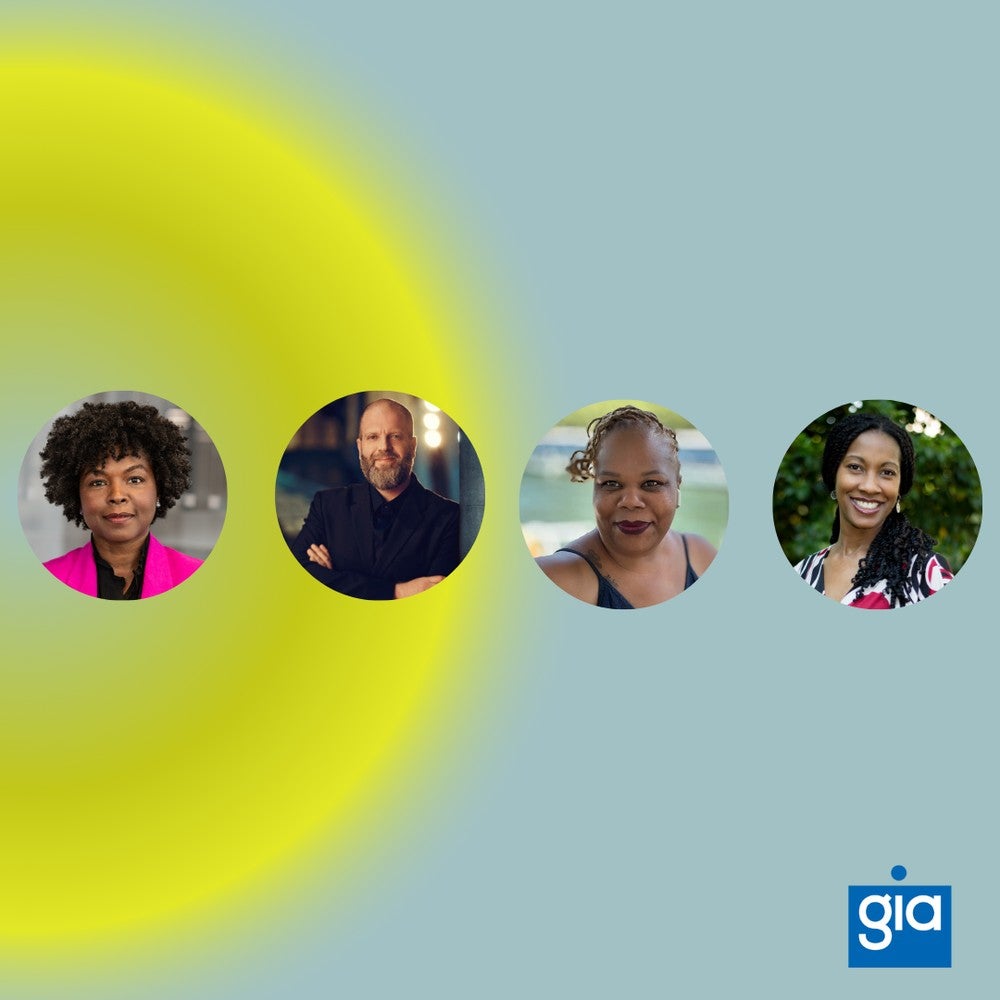This post is an update on a 2014 case study of Minnesota Opera’s Wallace-funded efforts to attract new opera fans and supporters. It is one of a series of blog posts exploring how organizations' audience-development efforts fare once Wallace funds run out. It does not include a thorough analysis to determine whether the financial benefits of the efforts described are commensurate to their costs.
Those unfamiliar with opera often assume the art form is for a different kind of person; they may think of someone older, wealthier, with different sensibilities and maybe even a bit pretentious. For the marketing staff at Minnesota Opera, the key to bringing newcomers to the performance hall requires, first and foremost, challenging that assumption. One tack has been to enable trusted opera devotees to act as ambassadors and encourage others to give the art form a try. Assisted by a four-year (2009 to 2012), $750,000 Excellence Award from The Wallace Foundation, the organization successfully enlisted an influencer with a wide following who attracted new ticket buyers. When a medical condition forced that influencer to retire, the staff empowered other groups in its audience base to cultivate new attendees.
Tapping Local Partners
The company, which produces five operas per year for an audience of nearly 45,000, first experimented with this idea in its 2008–2009 season, with a Bring-a-Friend program. Through that effort, its roughly 3,000 subscribers could receive a free companion ticket to a performance, which they were asked to give to a friend who had never attended Minnesota Opera. Staffers were discouraged when fewer than a fifth of subscribers took advantage of the offer but took heart when half the invited friends later bought tickets themselves. That high return rate got the marketing staff thinking about how to expand the model by tapping into a trusted advocate with greater reach.
As detailed in a 2014 case study, the company launched a partnership with Ian Punnett, a longtime opera attendee and host of a morning drive-time pop-culture radio show. In show banter and in ads, he told his audience, which was made up mostly of professional women, what they would find enjoyable about specific Minnesota Opera productions. Avoiding esoteric references, he emphasized the drama, spectacle, pageantry and passion on stage. Over the four years of Wallace Foundation funding, more than 1,000 new households redeemed free tickets received in promotions on Punnett's show, in line with the company’s projections. What’s more, 18 percent of these newcomers returned on a paid ticket, well exceeding the 10-percent return rate documented in a 2008 study of first-time visitors at nine American symphonies.

The radio partnership was just one component of the strategy. A local afternoon TV talk show also distributed free tickets to all members of its 50-person studio audience. But the show’s hosts lacked Punnett’s connection to opera and couldn’t speak as compellingly about it. Further, audience members received tickets whether they were interested or not. Few redeemed tickets and the partnership was scrapped in its second year.
The company also conducted research into audience motivations for buying tickets and, importantly, what prevented first timers who had come through the radio promotion from returning a second time. The research revealed that, although those newcomers may have enjoyed attending the performance, when they were considering a return visit, they didn’t have Punnett to steer them toward another opera. Marketing brochures were designed for traditional audiences, lacked Punnett’s accessible style and had references that newcomers did not fully understand. What’s more, the decision to return not only involved choosing an opera, but also selecting a seat in an unfamiliar hall. Consumer psychologists have long noted that too many options can overwhelm unfamiliar consumers, causing them to avoid choosing anything at all. Minnesota Opera’s research suggested that this tendency may be at play among its prospects. They needed help and sometimes a push to identify when and how to return.
These insights gave rise to multiple marketing strategies to overcome that purchase inertia. One tack was to simplify the decision-making process by creating offers for tickets in a specific seating section, eliminating the need to select where to sit. These promotions typically offered configurations such as “Three tickets for $75,” and produced about 100 new subscribers when they ran in local newspapers. Another approach was an impulse-buy promotion offered at two or three performances each season. First-time subscribers received a discount on a new subscription if they signed up before leaving the performance hall. Approximately 100 new subscribers did so each evening the offer was made available.
Turning to Existing Ambassadors
Severe tinnitus forced Punnett to retire from radio in early 2013, bringing Minnesota Opera's partnership with him to an unexpected end. The company sought a similar partner who shares a love of opera, a large audience and a relatable personality—critical factors that drove the program's success—but was unable to find one. The staff therefore tried to deputize different groups within its audience base. “When a friend recommends going to the opera, it’s very different than being served a marketing message," says Marketing Director Katherine Castille.
The company still runs its Bring-A-Friend program but has had to pare it back as its popularity has grown. Minnesota Opera has approximately 3,000 subscribers, and an open offer to all of them meant that the company could potentially hand out more than 500 tickets per production. It therefore offers Bring-a-Friend tickets for just one production each year to the approximately 200 subscribers who automatically renew their subscriptions before the next season’s titles are revealed. The approach provides an incentive to auto-renew while also attracting a small number of newcomers to the performance hall.
Bring-a-Friend Redemptions and Returning Households

Beginning in the 2016–2017 season, Minnesota Opera also began offering complimentary 'loyalty tickets' to some subscribers, not just to show appreciation but also to help introduce their friends to the company. The group that receives the offer varies. That way, no one gets used to relying on free tickets and the marketing team can target larger or smaller groups depending on the number of seats available. For one show, free tickets might be offered to weekend subscribers; for another, they could go to new subscribers or those who have subscribed for more than ten years. Unlike Bring-A-Friend, these tickets do not need to be given to someone new to the company, but many are. Some preliminary results (below) show that the program is providing a very low-cost way to bring in new audiences; 183 (25 percent) of the 720 new households that came through the program purchased tickets themselves afterwards.
Loyalty Ticket Redemptions and Returning Households

The staff is aware of the arguments against offering free tickets: They can deflate perceptions of the operas’ value and, if used too liberally, teach people to expect them. For that reason, it distributes loyalty tickets in a highly targeted way. For starters, the company offers at most one free ticket to each patron each year and, to capitalize on patrons’ social connections, asks the recipient to invite a friend. The company typically makes these tickets available only in circumstances where sales are likely to need a lift—e.g., less popular showtimes, hard-to-fill seats, less familiar titles and shows early in the season that don't have much time for advance sales.
Offers and Messages to Encourage Ticket Purchases
Relying on insights from its research with first-time attendees, the company still offers impulse-buy subscriptions following certain performances. It provides a discount of between 30 and 50 percent to single-ticket buyers who opt for these offers. The company targets well-known titles and performances outside of the subscription series, because those evenings are likely to have the most non-subscribers in attendance. Over three nights at the end of a run of La Traviata in May 2019, the company sold 160 new subscriptions, together worth approximately $25,000. The year prior, it ran the offer at two performances of Rigoletto, bringing in approximately $14,000 through 90 new subscribers.

The company also tries to point newcomers in the direction of operas they might like, much as Punnett did on his radio show. The practice began when the staff heard in focus groups that people who had not returned to the opera missed Punnett’s guidance. Staffers initially responded by rewriting season brochures to signal which works were “perfect for an opera newbie” or “perfect for an opera buff.” But they nixed the strategy after one season; staffers became concerned that the phrasing might sound as if they were suggesting “opera smart” or “opera dumb.”
The need to help newcomers pick an opera was still there, however. “We have to find new ways to help people relate,” says Castille. “The seemingly natural reaction seems to be, ‘It’s not for me,’ and we need to make it more approachable.”
Now, communications targeting single-ticket buyers, who are more likely to be newer to opera, provide guidance on who should see what opera by including references to similar works and pop-culture. For a recent production of Marriage of Figaro, for example, audiences were told that it would be perfect for people who like Downton Abbey, Amadeus and Cosí Fan Tutte.
In all communications Minnesota Opera also targets misperceptions about opera more directly. The company always promotes the fact that tickets start at $25, as it has done for the past ten years, because people assume opera is expensive. It also shows simultaneous English translation during performances, and has consistently communicated that point in print, TV and radio advertising for more than a decade. Even so, misconceptions have proven to be resistant to change (that’s true for other art forms as well). The company recently completed focus-group research and, Castille says, “Those perceptions are still out there—that opera is super expensive, it’s stuffy, it’s exclusively for much older people, I have to know a different language. The work is never done."




